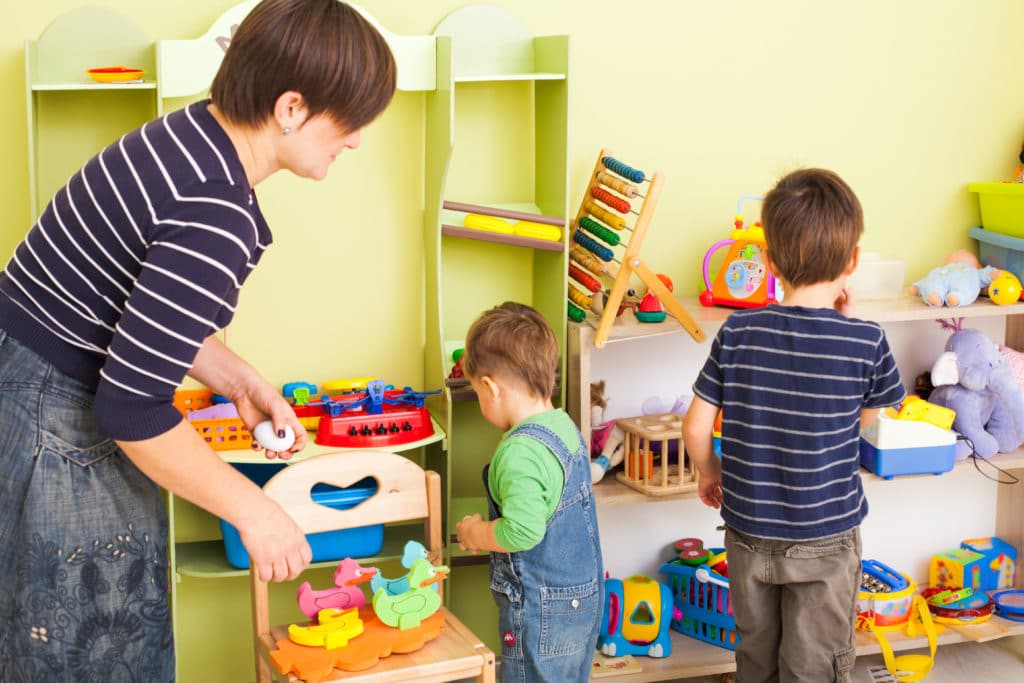3.2 Clean Up
Cleanliness plays an important role. For a child cleaning up often means the end of play time and that may be very frustrating. Getting children interested in these tasks is an important challenge for the educator. Take the opportunity to make children aware of the advantage of having a clean space. The clean up routine should allow children to acquire a responsible attitude toward materials and equipment according to their level of development. You may also emphasize the disadvantage of untidiness or of dirtiness. Occasionally, you may present an interesting story to raise children’s awareness of this. Above all the examples set by adults play a major role in children’s learning. These examples must be coherent and convincing for the children if they are to be effective. They must understand the rules for using materials as well as the consequences for failing to follow these rules.
Cleaning Up the Outdoor Space
outdoor storage facilities should be as strategically organized as indoor ones. Storage should be planned so that at the end of the day outdoor materials are stored in a shed or brought back indoors. It is important to have either mobile storage or a shed that is easy to access and functional to shelter materials from bad weather and prevent theft. Carts with wheels are handy for children to use to carry and store play materials. Good planning will alleviate the heavy load of the educator during outdoor play and make overall clean up more enjoyable.
Encouraging Clean Up Time

It’s important to make use of everything that can make cleaning tasks easy and enjoyable. In addition to employing an effective storage system and room arrangement, educators should foster children’s acquisition of skills so children can participate in transition activities.
Although they can be enjoyable, cleaning is tasks imposed on children by adults. When it is time to clean up children usually do not say they want to clean up rather they voice their desire to continue playing. Do not expect overwhelming enthusiasm from children during this time. It is normal for children not to enjoy cleaning up since they don’t understand the reason for this activity.
Having realistic expectations about children’s abilities and motivation levels also means taking into account such factors as the various energy levels during the day, the critical periods in a child’s life, the adaptation process of a newcomer, a two year-olds opposition, an eight year-old’s need to argue, upcoming holidays, and even those days when everybody seems restless or in a bad mood.
Methods to Help Children Participate in Cleaning Activities
- Initiate short activities that end with a brief transition time of cleaning up. Children will be successful and proud. (2-3 year-olds)
- Get children to find solutions to their problems, including disinterest, lack of attention and focus, and so forth. (5 and up)
- Give responsibilities to children so that they feel grown up. (3 -8 year-olds)
To counter a child’s lack of interest in cleaning up assist them by handing them the item and let them find the correct bucket that it belongs in. Praise them for doing such an amazing job and give them a high-five. Then ask them what they would like to put up next. Do this with them multiple times until they feel secure doing it on their own. Children who lose focus easily may need a little assistance staying on task. Remind them what the task is and ask them what they should do next.
